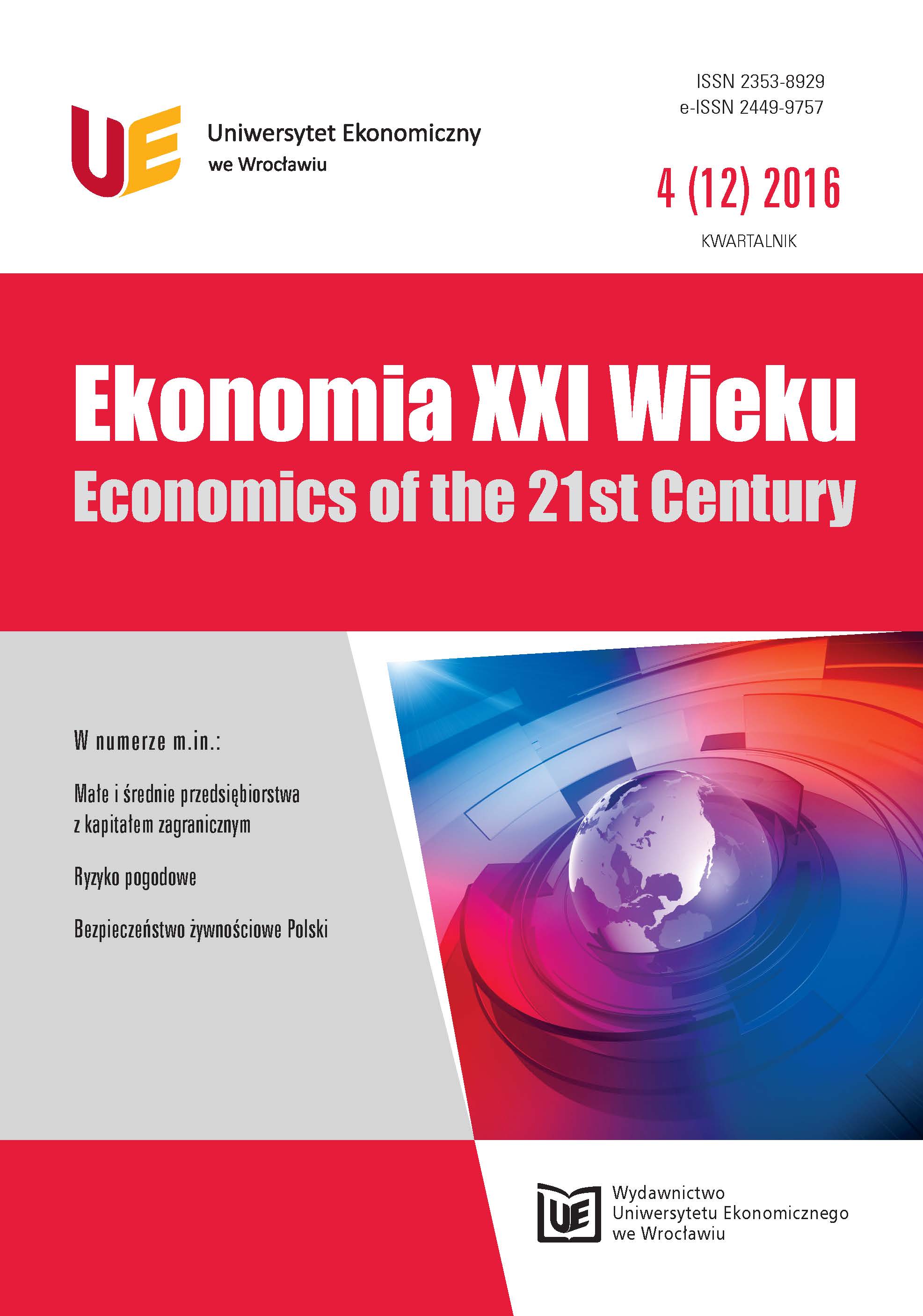Eksport według klasy wielkości przedsiębiorstw – analiza struktury
Export by enterprise size class – structure analysis
Author(s): Wirginia DoryńSubject(s): Economy, Business Economy / Management
Published by: Wydawnictwo Uniwersytetu Ekonomicznego we Wrocławiu
Keywords: export; size of the company; Poland
Summary/Abstract: The draft strategy for the responsible development indicates among the threats for Polish economic development path the problem of concentration of foreign expansion in the group of large companies which are often linked to foreign capital. At the same time only 6 of Polish companies are identified as world champions. Therefore, the strategy assumes supporting the potential of international development of small and medium-sized enterprises, which are able to independently shape their path of expansion. The study attempts to assess the concentration of Polish exports within the manufacturing divisions (2-digit level of aggregation) using data on exports by company size. Knowledge on the diversity of the groups’ export structures can be an important prerequisite for providing an adequate export policy. The classification of NACE divisions into groups of similar structure was carried out by vector elimination method [Chomątowski, Sokołowski 1978]. The study used data coming from the Eurostat database on trade by business characteristics for 2013. The method of structure taxonomy allowed to divide the manufacturing section into three following groups: a group in which export was dominated by the large enterprise size class (divisions: manufacture of tobacco products, manufacture of pharmaceutical products, manufacture of motor vehicles, trailers and semi-trailers) − with the 93% share of large entities class, 5.1% share of medium-sized companies, 1.3% share of small companies and 0.6% of microenterprises’ participation; a group of divisions including: manufacture of textiles, manufacture of wearing apparel, manufacture of leather and related products, printing and reproduction of recorded media, manufacture of metal products, in which medium-sized enterprises sector generated 41.8% of exports, i.e. a share that is similar to that of large enterprises (40.1%), with the 14.4% participation of small entities and 3.8% share of microenterprises, and a group of other NACE divisions in which the shares of each size class (large, medium, small and microenterprises) equalled to: 71.3% 20.5%, 6.4% and 1.8% respectively. It can be concluded basing on the conducted taxonomy analysis that the existing differences in the role of each size class of enterprises in generating exports can be a voice in the discussion on export policy. It is not clear, however, which of the identified groups of divisions the support should concentrate on. Should it concentrate on the divisions, which export is dominated ceteris paribus by big players and in which relatively high export value falls per one enterprise (group III), or a group II, in which the share of medium-sized enterprises is similar to that of large companies, but the average intensity of exports is rather low, or group I, in which the value of exports per enterprise is similar or slightly higher than the average for section C with the predominant role of large enterprises, but at the same time a significant share of the other size classes of enterprises.
Journal: Ekonomia XXI Wieku
- Issue Year: 2016
- Issue No: 12
- Page Range: 9-21
- Page Count: 13
- Language: Polish

